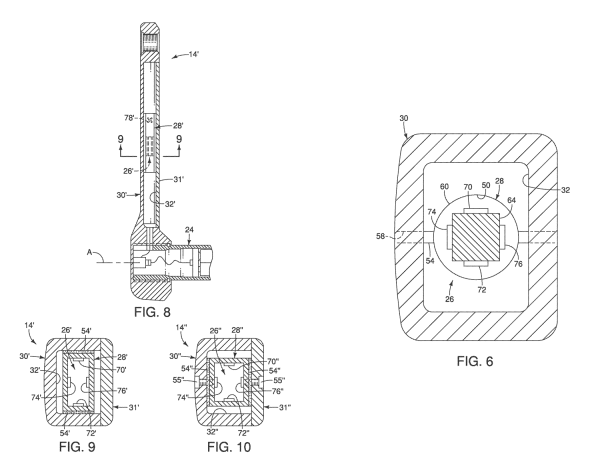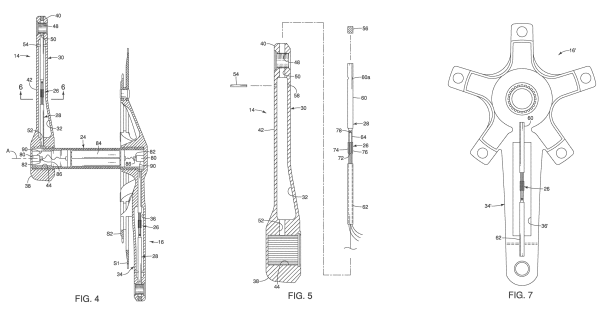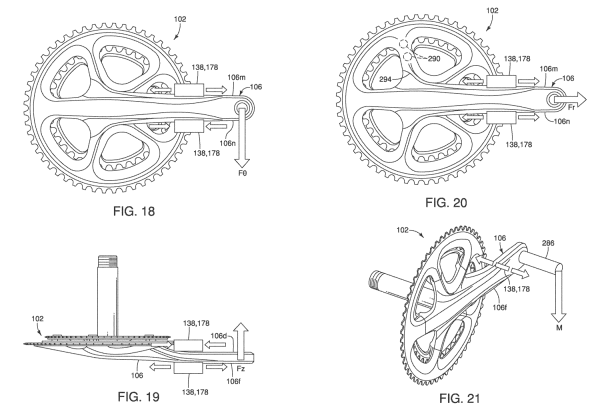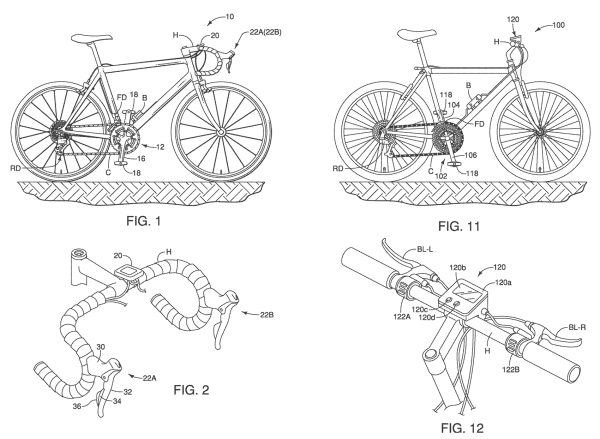Shimano has filed several patent applications for a powermeter crankset, integrating the strain gauge directly inside both left and right crank arms.
The application using the drawings shown here was filed in April 2012 as an addendum to an earlier March filing. It was published last September. The claims of the patent include a crank body, including the axle, a sensor support member inside the crank body and a power sensing device consisting of a strain gauge and semiconductor sensor to detect the strain.
In laymen’s terms, it shows a strain gauge inside the crank arm. Now, for the details…
From the outside, this would probably look like any other Shimano crankset. Everything’s hidden inside, with the strain gauge inserted through a bore above the pedal mount. Wires connect it to a battery in the axle, and somewhere on the system are transmitters to wirelessly send the data to a computer. The images suggest there could be a charging port on either end of the axle (but probably just the non-drive side since Shimano’s drive side crank is a closed design), but knowing how long batteries last in current power meters, it wouldn’t be that big a deal if it were fully enclosed. There’s also likely a plug to connect both sides to the battery to enable easy non-drive crank arm removal and total battery removal.
Where things get really interesting is in the planes of force measured:
- Fig. 18 – driving torque
- Fig. 19 – out-of-plane force
- Fig. 20 – radial force
- Fig. 21 – torsional moment force
The photo at the top of the post shows four sensors, one touching each wall of the crank arm, which would deform along with the crankarm under pedaling forces and let it measure flex in all directions. At present, it’s probably more data than any cycling computer can digest, but so was the hi-res output on the Factor Vis Vires at first. Maybe it’ll usher in new measurement metrics, or maybe it’s just a way of combining more and more data to present a more accurate measurement of your actual power output. The patent suggests the strain gauges and support structure will be permanently bonded inside the crank arms.
The filing also mentions that the effort calculated could also be used to “aiding operating a component of the bicycle”. Some of the other drawings show a commuter bike equipped with the system and a cycling computer. That could mean they’re looking at ways of integrating it into their STEPS e-bike systems using a less costly method of crank integration (it mentions a bolt-in/on version), providing motorized assist based on input.
But it’s far more fun to read that the filing mentions it could “wirelessly (or with wires) transmit information to one or more electrical bicycle components such as the cycle computer, the electronic front derailleur and the electronic rear derailleur.” Hmmm…the new D-Fly Di2 wireless transmitter just got more interesting.
Of course, all of this is speculation, and it’s likely the scope of the filing intentionally covers pie in the sky thinking to keep options open (for them, and closed to others). Shimano doesn’t comment on products or rumors until things are officially released. But, last time we found Shimano’s patents, some of them were quite telling of products to come (and some definitely were not). These fall into the “entirely possible” category and would usher in the sleekest power meter integration on the market. Time will tell…
Check out the full application on the USPTO website.
Huge thanks to Tehan for the tip!



